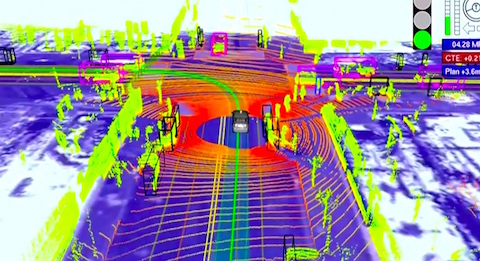The Waymo-Uber lawsuit: how to call someone a thief

Waymo, the autonomous-car division of Google’s parent Alphabet, is suing Uber and its autonomous car division Otto. Waymo claims Otto stole its intellectual property. To win a battle like that, you need credible facts and an unemotional approach. Waymo does it pretty well.
As I described earlier this week in another case against Uber (it’s been a bad week for Uber’s image), the more outrageous the behavior you’re calling out, the calmer your writing must be. Yesterday, Waymo basically claimed that Uber’s autonomous cars are based on stolen technology. In a Medium post of less than 700 words with the unemotional title “A note on our lawsuit against Otto and Uber,” the Waymo team explains the complex technology and share a devastating narrative of how the theft happened.
Here’s the explanation:
One of the most powerful parts of our self-driving technology is our custom-built LiDAR — or “Light Detection and Ranging.” LiDAR works by bouncing millions of laser beams off surrounding objects and measuring how long it takes for the light to reflect, painting a 3D picture of the world. LiDAR is critical to detecting and measuring the shape, speed and movement of objects like cyclists, vehicles and pedestrians.
Here’s how they discovered that Otto/Uber were using their intellectual property:
Recently, we received an unexpected email. One of our suppliers specializing in LiDAR components sent us an attachment (apparently inadvertently) of machine drawings of what was purported to be Uber’s LiDAR circuit board — except its design bore a striking resemblance to Waymo’s unique LiDAR design.
And here’s how they say that happened:
We found that six weeks before his resignation [from Waymo, a] former employee, Anthony Levandowski, downloaded over 14,000 highly confidential and proprietary design files for Waymo’s various hardware systems, including designs of Waymo’s LiDAR and circuit board. To gain access to Waymo’s design server, Mr. Levandowski searched for and installed specialized software onto his company-issued laptop. Once inside, he downloaded 9.7 GB of Waymo’s highly confidential files and trade secrets, including blueprints, design files and testing documentation. Then he connected an external drive to the laptop. Mr. Levandowski then wiped and reformatted the laptop in an attempt to erase forensic fingerprints.
No jargon or weasel words required
Note the paucity of weasel words like “outrageous,” “huge,” or “criminal.” True, the design bears a “striking” resemblance to Waymo’s and the files that Levandowski allegedly stole are not just confidential but “highly” confidential. But the facts that Waymo articulates are sufficiently convincing that there is no need to stir things up. The tone is “He stole important stuff, we can prove it, so we’re suing.”
Take note also of how Waymo describes LiDAR. You can’t explain this lawsuit without that jargon word, so they define it in simple terms. Anyone can understand words like “laser beams,” “3D picture,” and ” circuit board.” Instead of making us feel stupid, this clear description makes us feel smart.
The actual criminal complaint contains a lot more evidence of wrongdoing, but the Waymo team has chosen to leave it out of this description. What they’ve included is quite sufficient; there’s no need to bring up anything else.
How to sue somebody
Any time lawyers get involved, it’s going to get messy. Public opinion will take a hit on both sides. Waymo shows how to do it right:
- Get the clearest possible evidence.
- Issue a statement concurrent with filing the suit.
- Keep the statement short and unemotional.
- State clearly what happened and why it’s a problem.
If the facts are on your side, you’ll win in the court of public opinion long before you do in court.